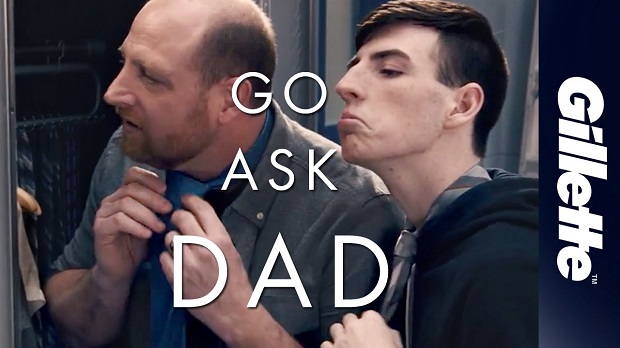Most teenagers search the internet to find instructions for tasks like tying a tie, shaving or asking a girl out, but a video series from P&G’s Gillette showed how powerful getting a father’s advice in person can be- getting 6 million YouTube views in the process.
Case study summary
• Leading men’s shaving brand wanted to tackle poor performance on SEO
• Video ads encouraged teens to seek traditional ‘ask dad’ advice about shaving over searching on the internet
• Engaging videos earned 6 million views on YouTube
The challenge
Teens increasingly turn to their phones, and the internet, for queries on how to do almost everything.
Gillette research shows 94% of teens ask the internet for advice before they ask their dads, said Carlos De Jesus, North American Shave Care brand director for P&G. “We wanted to remind them all how dad is the best source of information,” he said.
The brand has a dominant 80% share of the razor blade market, and more than 62% share of razor handles in offline stores, according to Nielsen data from Deutsche Bank.
However, other smaller rivals are bigger in e-commerce. Search Google for “razor,” or “what’s the best razor?” and, while Gillette may have the top paid listing, other paid and organic listings from e-commerce brands such as Dollar Shave Club, Harry’s and DorcoUSA dominate the page.
The solution
For Father’s Day 2016, Gillette launched an extensive digital and integrated effort to encourage them to “Go Ask Dad” instead for advice on such things as tying ties, asking girls for dates, or, of course, shaving.
The commercial, which runs 2 minutes, 30 seconds, went live on P&G’s and Gillette’s social media platforms with the hashtag #GoAskDad.
Gillette – Go Ask Dad – Case Study from Jackie Helfgott on Vimeo.
P&G did not air a version on TV, but the global campaign included videos posted to the web in France, Portugal, Latin America and Spain.
The video from Grey New York for the Procter & Gamble Co. brand shows dads in Spanish, French and English talking wistfully about how their sons rarely ask them how to do things, and far less so than they asked their own dads.
That sets up a test where boys first try learning things by “asking the internet,” then asking their dads, and comparing results. Dads, perhaps unsurprisingly, turn out to be better teachers.
The prominence of competitiors in search is one reason Gillette is making search advertising a big part of its Father’s Day campaign, with paid ads that link to the video, Mr. De Jesus said.
“One of the things we want to do is interrupt the search experience on Father’s Day,” he said. “We’re going to be there for any of the how-to moments during that week. If you search how to shave, we’re going to be part of that. If you search how to change a tire or how to put on a tie, we’re going to be part of the conversation.”
Ketchum handed PR, with WPP’s Catalyst and Possible looking after search and digital marketing. Carat handled media buying.
The results
The videos were a huge success, getting 6 million views on YouTube.
Gillette also donated $50,000 to the National Center for Fathering, a non-profit that focuses on fostering the relationships between fathers and sons, as part of a Father’s Day effort.

